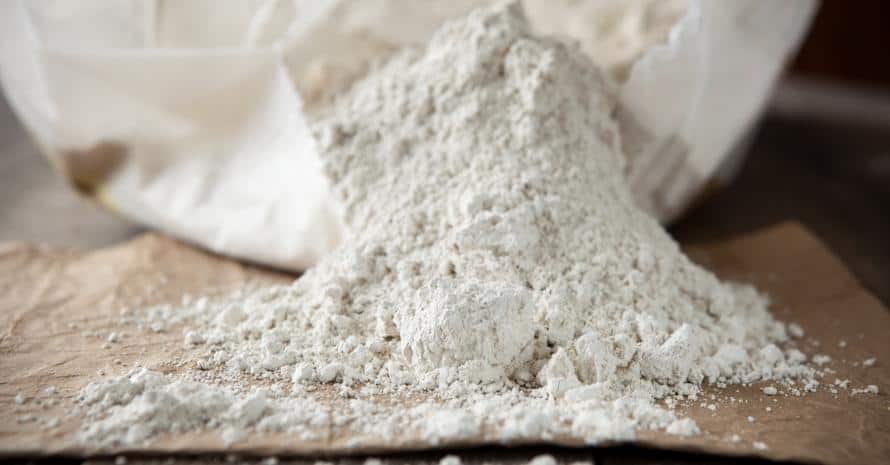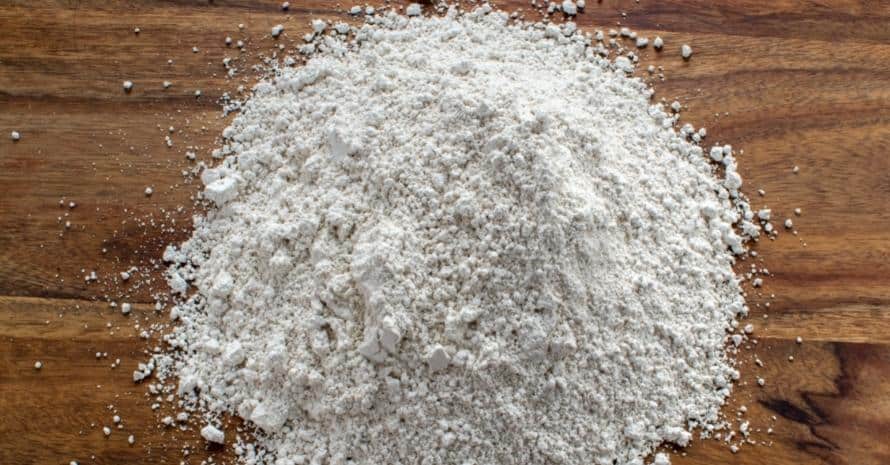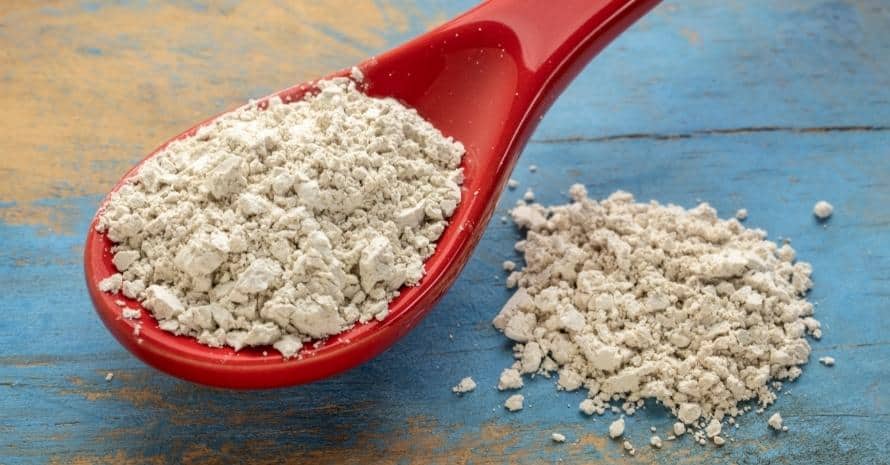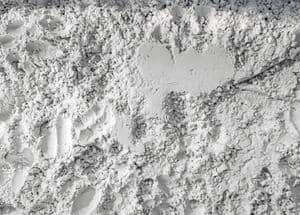Ants are considered one of the most common insects on the planet. Although they are an essential part of the food chain and may even be beneficial to the garden, it’s best to keep them out of your area.
The complexity of their elimination lies in the fact that they live in large groups, and their bodies are covered with chitinous solid shells, which is why common insecticides don’t work on them.
You should not use chemicals but diatomaceous earth. Ants do not have the necessary mechanisms to counter this tool. Read more about its use below.
Diatomaceous Earth Ant Killer Guide

The fight against all insects and arthropods (for example, centipedes), covered with a chitinous shell, is of particular difficulty. The fact is that such strong protection does not allow contact agents to penetrate inside, so you need to look for other ways.
Ants have an excellent sense of smell, and strong odors like kerosene or turpentine can repel them. However, using only one method is not enough, and this is where diatomaceous earth or kieselgur comes to the rescue.
What is diatomaceous earth?
Diatomaceous earth (sometimes also called kieselgur) is a fine powder of white, gray, or beige colors. It is mined as a mineral and is used in pharmaceuticals, construction, industry, and agriculture.
Its uniqueness lies in the fact that half or even more of it consists of fossilized shells of diatoms. The extracted pieces are ground into a fine powder, from which a variety of products are made.
Diatomaceous earth is used in pool filters, products for polishing, and even as food additives. Most importantly, however, it makes excellent pest control tools that handle a wide variety of insects and arthropods.
Unlike remedies intended for industrial production, food-grade diatomaceous earth for ant control is non-toxic and harmless to people and pets.
How does it work in pest control?
As I said, diatomaceous earth contains crushed shells of special shelled algae. If you look at the powder under a microscope, you will see that it is made up of microscopic plates with extremely sharp edges.
Means based on it are absolutely safe for humans since our skin is too elastic and flexible, and micro-plates simply cannot cause any damage to it. The same goes for all the pets and animals.
With the chitinous shells of ants, the situation is quite different. Insects crawl on the scattered powder and get small scratches (as if a person walked on glass chips).
Diatomaceous earth has excellent adsorbent properties, and therefore, clogging into cuts, it absorbs moisture and dehydrates the creatures’ bodies. There is also an opinion that it works a little differently.
Powder particles adhere to oily shells and eyes and enter the respiratory tract of insects and thus absorb any inside liquid. However, the principle of its work is not as important as the effect.

As a result of such a destructive effect, the ants die. That is, the powder has not a chemical, but a physical impact, so it is safe for creatures with elastic skin. However, I still recommend wearing a dust mask to avoid powder getting into the lungs when you use it.
Does diatomaceous earth kill ants?
My short answer is yes, diatomaceous earth and DE products do kill ants. They also destroy other creatures like scorpions, ticks, lice, centipedes, etc. Efficiency and noticeable results largely depend on the specific type and weather conditions if you use diatomaceous earth outdoors.
This powder is harmless to most creatures; however, chitinous insects and arthropods slowly die of dehydration, which is quite cruel. In general, ants can be beneficial to your garden (for example, they kill other pests and increase soil fertility).
Therefore, I would advise utilizing diatomaceous earth with caution and not using it unless these insects cause you great discomfort and harm your plants.
How to use diatomaceous earth to get rid of ants?

There are no special instructions for the use of this powder. Because it’s non-toxic and has a physical impact on insects, you don’t have to worry about overusing it or, conversely, using too little of it.
Here are the basic steps and a few of my recommendations based on my own experience on how to spread diatomaceous earth for ants.
Step 1: Preparation
Before you start using DE, you should conduct a thorough survey of the area you plan to treat. You need to determine the main routes of insect movement and understand exactly how they get into your apartment, house, or yard. It’s good if you will be able to find anthills.
Then put on your personal protective equipment. Diatomaceous earth is safe, so you don’t have to worry if it gets on your skin. However, I still recommend using a respirator, thick rubber gloves, and goggles to keep the powder out of your organism. Having fine dust in your lungs is no good, even if it is non-toxic.
Step 2: Apply powder
How to apply diatomaceous earth? Sprinkle a thin layer of DE along the ant’s paths. If you see their accumulation somewhere, you can pour the powder directly on insects.
Also, treat the perimeter around anthills (if you manage to find them). As an additional measure, sprinkle earth along baseboards, on window sills, thresholds, near cracks or holes in walls, and even around the house.
In general, you should treat all areas where insects crawl or may crawl. If you can’t reach the right places, for example, because of standing furniture, use a duster. Diatomaceous earth is good because it can be used both outdoors and indoors.
Step 3: Observe the result
Since the powder is a contact agent, it only affects insects that have crawled over it. Therefore, you will probably have to wait for noticeable results a bit.
After 2-3 days, I recommend checking the places where you scattered the earth. If it turns out that insects have changed their regular routes, you should detect them and process them in the same way as described in the previous paragraph.
Repeat application until visible traces of ants are gone.
Step 4: Next measures
Although diatomaceous earth is safe, you should still clean the premises. If you have applied the powder in rooms, vacuum or mop the floors and any areas where you have spilled the product. This way, you will remove diatomaceous earth and dead insects, whose pheromones can attract ants.
While I advise a thorough cleaning of the premises, do not remove the powder where you applied it outdoors. On the contrary, it is recommended to treat the ground around the house base and places where there is still a chance that ants will try to crawl inside once again. Diatomaceous earth against ants is most effective when dry.
Therefore, if water gets into the treated areas, e.g., when you water your lawn, reapply the powder. I also recommend doing it every time it rains.
Make diatomaceous earth for ants more effective
I find diatomaceous earth to be an incredibly effective ant killer. It does an excellent job of eliminating annoying pests. However, the best option is always an integrated approach.
Therefore, if you experience severe ant problems, you can enhance the effect of the DE powder by mixing it with other products. You can add organic repellents to it like cayenne pepper, baking soda, garlic, cinnamon, wormwood, and so on.
Also, insects do not like the smell of kerosene, hemp and linseed oils, and turpentine.
Natural pyrethrum, which is obtained from plants, has proven its effectiveness as well. It has a repellent and nerve-paralytic effect and, on direct contact, kills not only ants but also many other insects.
You can mix it in half with diatomaceous earth and treat areas where ants crawl. I draw your attention to the fact that you need to use natural pyrethrum since it is safe for humans and does not harm pets and animals due to their large size.
Its synthetic counterparts, although more effective, can be extremely toxic.
Diatomaceous Earth Ant Killer FAQ

Diatomite is a fairly simple yet effective tool to use. However, if you still have questions after reading my guide, you will find more information in this section. I always draw on my own experience when answering questions from readers.
What kind of diatomaceous earth kills ants?
Diatomaceous earth comes in pool and food grades. You should choose the second option as it is non-toxic and safe for people and pets. Also, note that you need exactly the powder.
In gardening stores, you can find granular earth designed to control flower bed pests. It will be less effective against ants.
How long does diatomaceous earth take to work on ants?
Since it is a contact medium, it will take some time for ants to crawl over it and get damaged. On average, you will notice the first results one to two days after the first application. In a humid environment or rainy weather, it will take longer and may require reapplication.
Does diatomaceous earth work wet?
I come across DIY spray recipes with DE and various liquids (water or dish soap). However, the most effective, I think, is the application of a dry powder. Soaked earth does not harm insects, but after drying, its properties return (of course, if it was not washed away by rain into a ditch).
How long will diatomaceous earth last?
If the powder you apply stays dry and does not blow away with the wind, it will continue to protect you from insects for a very long time. Since it causes physical rather than chemical damage, it does not lose its properties over time.
The main thing is maintaining the right conditions, especially monitoring the humidity. After every rain or lawn watering, I recommend repeating the application.
Deal With Ants Like a Pro
Diatomaceous earth is an accessible, inexpensive, and safe way to get rid of annoying insects indoors and outdoors. Ants can help maintain your garden ecosystem, but they also can be dangerous in large numbers.
The bites of some species are painful and deadly for those with severe allergies. That is why you need to have the means to kill them at hand. I hope my guide will be a great help in your pest control.
Please share your insect control methods. What tools do you use against ants? Do you apply diatomaceous earth?
Also read:
References
- Pyrethrins(National Pesticide Information Center)
npic.orst.edu/factsheets/pyrethrins.html - Diatomaceous Earth(National Pesticide Information Center)
npic.orst.edu/factsheets/degen.html#symptoms - Types of PPE(University of California Merced)
https://ehs.ucmerced.edu/researchers-labs/ppe/selection - Ants have an exceptionally high-def sense of smell(Vanderbilt University)
https://news.vanderbilt.edu/2012/09/10/ants-have-an-exceptionally-high-def-sense-of-smell/

